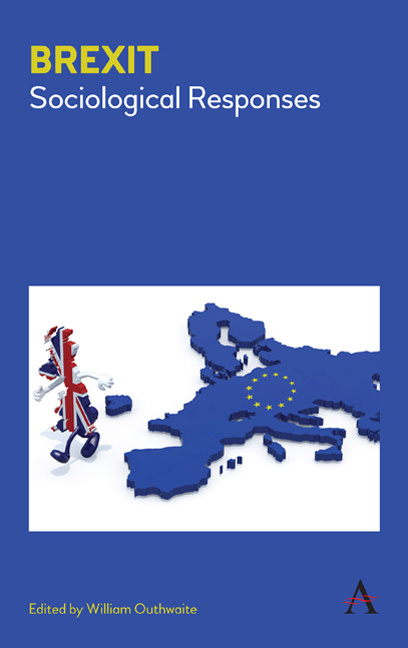Book contents
- Frontmatter
- Contents
- Preface
- Section 1 HOW DID IT HAPPEN?
- Chapter One The Increasing Inevitability of That Referendum
- Chapter Two Vox Populi: Nationalism, Globalization and the Balance of Power in the Making of Brexit
- Chapter Three Exit from the Perspective of Entry
- Chapter Four Brexit, Sovereignty and the End of an Ever Closer Union
- Section 2 THE POLITICS OF BREXIT
- Section 3 PROSPECTS FOR/ AFTER BREXIT
- Notes on Contributors
- Index
Chapter Three - Exit from the Perspective of Entry
from Section 1 - HOW DID IT HAPPEN?
Published online by Cambridge University Press: 10 January 2018
- Frontmatter
- Contents
- Preface
- Section 1 HOW DID IT HAPPEN?
- Chapter One The Increasing Inevitability of That Referendum
- Chapter Two Vox Populi: Nationalism, Globalization and the Balance of Power in the Making of Brexit
- Chapter Three Exit from the Perspective of Entry
- Chapter Four Brexit, Sovereignty and the End of an Ever Closer Union
- Section 2 THE POLITICS OF BREXIT
- Section 3 PROSPECTS FOR/ AFTER BREXIT
- Notes on Contributors
- Index
Summary
The United Kingdom's relation to European cooperation has been uneasy since well before its entry into the European Economic Community (EEC) in 1973, and that unease has often been mutually felt. French president Charles De Gaulle famously vetoed the UK's application for membership in 1963, fearing that Britain's ‘special relationship’ with the United States would diminish the capacity for the member states to act independently as a group, and entry was again turned down in 1967. Since joining, the United Kingdom has promoted the idea of European union as primarily an economic project of trade while resisting wider political or social integration. Thus, the UK secured an opt- out from the social chapter of the Maastricht Treaty, which came into effect in 1993 and led to the redesignation of the EEC as the European Union (EU). This opt- out was extended to monetary union (with its implication of political integration), which was initiated at the same time, leading toward the creation of the eurozone and the European Central Bank on 1 January 1999.
If the UK's relation to other European countries since entry has been uncomfortable (George 1990), Europe has also been a source of internal division within the two main political parties. The Conservative prime minister Edward Heath had negotiated entry, but almost immediately faced opposition from within his own party. This was orchestrated, in part, by Enoch Powell, who exhorted a vote for Labour in the October 1974 election, an election Labour won by the narrowest of margins. Faced with divisions over Europe in his own party, the new prime minister, Harold Wilson, called a referendum in 1975, having made this an election pledge the previous October. This was won by a vote of 68 per cent in favour of continued membership following a campaign similar to that of 2016. Both main parties officially supported the remain option, albeit with significant figures within them arguing for exit. In 1975 there was also opposition from the trades union movement and key figures on the left of the Labour Party, such as Michael Foot and Tony Benn (connections with this group is one of the reasons why the current Labour leader, Jeremy Corbyn, was suspected of being lukewarm in his support for remaining).
- Type
- Chapter
- Information
- BrexitSociological Responses, pp. 31 - 40Publisher: Anthem PressPrint publication year: 2017



